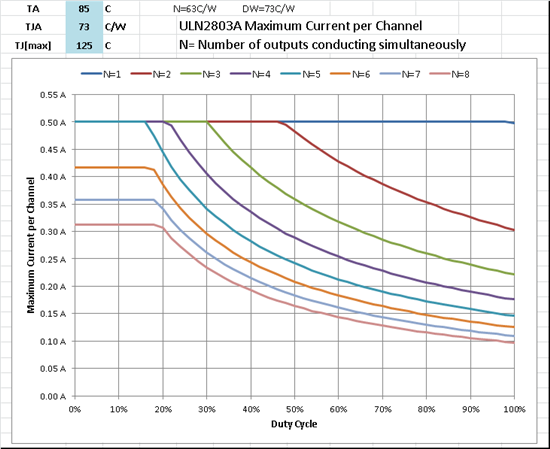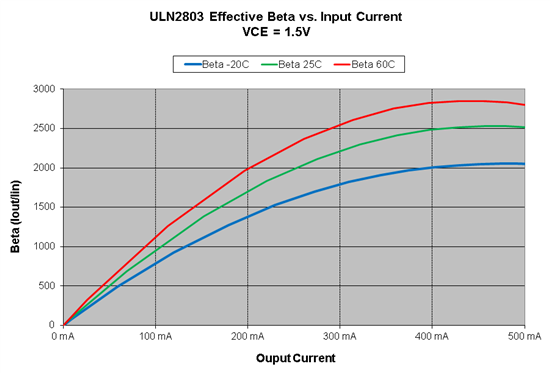Hello,
Via I2C, I am setting the registers in the TAS5717 (slave) from a LM3S9B96 (master) micro-controller.
These are the values I am setting:
(the first hex number is the register I am writing to, and all the consecutive hex numbers are the values I am writing to that register)
"X1B 82",
"X03 80",
"X11 77",
"X12 7F",
"X13 77",
"X14 7F",
"X1C 07",
"X05 00",
"X0E F1",
"X00 60",
"X04 05",//
"X0A 00 C0",
"X07 00 00",
"X50 0F 70 80 10",
"X25 01 02 13 45",
"X70 00 80 00 00",
"X71 00 00 00 00",
"X74 00 80 00 00",
"X75 00 00 00 00",
"X46 00 00 00 21",
"X43 00 74 00 00",
"X56 00 80 00 00",
"X57 00 02 00 00",
"X40 08 00 00 00",
"X73 00 80 00 00",
"X72 00 00 00 00",
"X76 00 66 66 66",
"X77 00 80 00 00",
"X4F 00 00 00 06",
"X3B 00 08 00 00 00 78 00 00",
"X3C 00 00 01 00 FF FF FF 00",
"X3E 00 20 00 00 00 40 00 00",
"X3F 00 08 00 00 FF F8 00 00",
"X51 00 80 00 00 00 00 00 00",
"X52 00 80 00 00 00 00 00 00",
"X58 00 80 00 00 00 00 00 00 00 00 00 00 00 00 00 00 00 00 00 00",
"X59 00 80 00 00 00 00 00 00 00 00 00 00 00 00 00 00 00 00 00 00",
"X5A 00 80 00 00 00 00 00 00 00 00 00 00 00 00 00 00 00 00 00 00",
"X5B 00 80 00 00 00 00 00 00 00 00 00 00 00 00 00 00 00 00 00 00",
"X26 00 80 00 00 00 00 00 00 00 00 00 00 00 00 00 00 00 00 00 00",
"X30 00 80 00 00 00 00 00 00 00 00 00 00 00 00 00 00 00 00 00 00",
"X27 00 7F 71 CA 0F 01 1C 6B 00 7F 71 CA 00 FE D2 1C 0F 81 0A F2",
"X28 00 7E 23 7F 0F 06 4E 40 00 7C 17 68 00 F9 B1 C0 0F 85 C5 18",
"X29 00 7F 77 F6 0F 07 50 35 00 7B 5D 2F 00 F8 AF CB 0F 85 2A DB",
"X2A 00 7C D5 0F 0F 35 15 81 00 6D 79 96 00 CA EA 7F 0F 95 B1 5A",
"X2B 00 DC 3F 74 0F 3B 93 F4 00 45 90 CF 00 3D E6 A7 0F E4 B5 22",
"X2C 00 80 00 00 00 00 00 00 00 00 00 00 00 00 00 00 00 00 00 00",
"X2D 00 80 00 00 00 00 00 00 00 00 00 00 00 00 00 00 00 00 00 00",
"X2E 00 80 00 00 00 00 00 00 00 00 00 00 00 00 00 00 00 00 00 00",
"X2F 00 80 00 00 00 00 00 00 00 00 00 00 00 00 00 00 00 00 00 00",
"X31 00 7F 71 CA 0F 01 1C 6B 00 7F 71 CA 00 FE D2 1C 0F 81 0A F2",
"X32 00 7E 23 7F 0F 06 4E 40 00 7C 17 68 00 F9 B1 C0 0F 85 C5 18",
"X33 00 7F 77 F6 0F 07 50 35 00 7B 5D 2F 00 F8 AF CB 0F 85 2A DB",
"X34 00 7C D5 0F 0F 35 15 81 00 6D 79 96 00 CA EA 7F 0F 95 B1 5A",
"X35 00 DC 3F 74 0F 3B 93 F4 00 45 90 CF 00 3D E6 A7 0F E4 B5 22",
"X36 00 80 00 00 00 00 00 00 00 00 00 00 00 00 00 00 00 00 00 00",
"X37 00 80 00 00 00 00 00 00 00 00 00 00 00 00 00 00 00 00 00 00",
"X38 00 80 00 00 00 00 00 00 00 00 00 00 00 00 00 00 00 00 00 00",
"X39 00 80 00 00 00 00 00 00 00 00 00 00 00 00 00 00 00 00 00 00"
However, when I read the registers, I can see all the values that I wrote except for the 5th and 17th value (which both happen to be 0x0F) of registers 0x27 to 0x2B and 0x31 to 0x35. When I read these positions in the resisters, I see "0x03" instead of "0x0F.
Ontop of all this, I am still not getting any output from the TAS5717 Audio Amplifier. Am I missing any registers? Or am I placing the wrong value into a register?
Any help/input would be most appreciated (:






